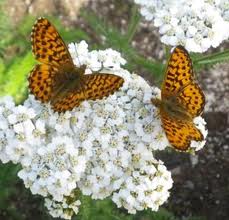Students explore mutualistic interactions by focusing on pollination. Do flowers attract specific or a variety of pollinators? Students hear a presentation on mutualism and pollination in particular, and the go outside and use actual observations and data collection to discover what types of pollinators visit flowering plants in their vicinity. The lesson is adaptable to multiple topics, grade levels, and habitats.
At the conclusion of the lesson, students will be able to:
- Explain the major kinds of interspecific interaction
- Explain what pollination is and how it works
- Identify one or more species of local flowering plants
- Identify pollinators by broad or narrow group, depending on age of students
- Collect pollinator visitation data in a scientifically rigorous way
- Discuss some of the ecological factors affecting composition and abundance of pollinator communities
Presentation: 20 minutes
Field: 30 minutes (plus time to get there and back)
Data collation and recap: 20 minutes
K-8; through 12 if instructor’s insect identification and statistical analysis skills are up to the challenge.
Resources:
Lesson Plan created by GK-12 Fellow Anne Royer, 2009

